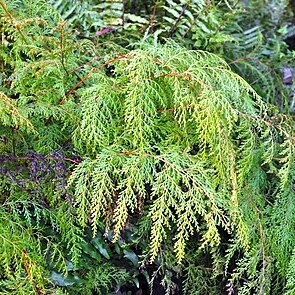Rhizome long creeping, wiry, slender, ca. 0.5 mm in diam., laxly branched, with rather sparse brownish hairs. Stipes remote, naked but very base hairy, 2-5 cm, winged except near base; wings becoming broader upward, entire, ± crisped at edge. Rachis straight or zigzag in very upper portion, winged like upper portion of stipe. Lamina tripinnate to quadripinnatifid, oblong-subdeltoid, 4-7(-15) cm, 3-4(-7) cm wide at widest basal portion, glabrous, apex ± acute; pinnae 5 or more pairs, basal ones oblong-subdeltoid, up to 3 × 2 cm, base broadly cuneate to rounded, shortly stalked, apex moderately acute to rounded; upper ones gradually becoming smaller upward, oblong in outline; pinna rachis like rachis, ± zigzag throughout; ultimate segments up to 4 mm, narrow, 0.6-1 mm wide, decurrent into every axis forming distinct, wavy or crisped wings ca. 0.8 mm in width, margin entire but undulate or crisped, apex rounded to obtuse; internal cell walls thin, straight. Sori scattered usually on apical parts of pinnae; involucres bivalvate, deeply cleft to base; valves subdeltoid to oblong, 1.2-1.6 mm, up to 1 mm wide, lips finely toothed; receptacles wholly included within involucres, clavate to filiform. 2n = 72.
More
Rhizome slender, smooth, intricately branched, with sparse brownish hairs. Fronds 3–10 cm long. Stipe 1–5 cm long, winged almost to the base; wing undulate or crisped. Lamina deeply 3-pinnatifid, 2.5–10 cm long, 2–4 cm wide; pinnae crowded, oblique. Ultimate segments 0.3–2 mm wide, flat to crisped; margins entire or uneven. Sori numerous on upper pinnae, often in adjacent pairs, borne on apices of lateral ultimate segments; sterile apex of each primary pinna normally projecting beyond outermost sori of the pinna; involucre oval to oblong, as wide as or wider than the segments, bilabiate almost to the base, 0.5–2.5 mm long, 0.8–1.4 mm wide; margins irregularly lobed or toothed; receptacle included.

